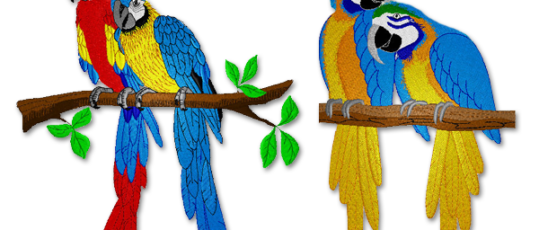Comprehensive Digitizing for Embroidery: From Design to Sew
Comprehensive Digitizing for Embroidery: From Design to Sew
Blog Article
Streamlining the Art of Needlework Digitizing: Step-by-Step Overview
As modern technology proceeds to breakthrough, the digitization process has ended up being extra easily accessible, allowing fanatics to bring their complex designs to life with ease. In this guide, we will unravel the complexities of embroidery digitizing, damaging down each step carefully to streamline the procedure and empower both novices and seasoned embroiderers alike.
Comprehending Needlework Digitizing Software Program
Needlework digitizing software application serves as a vital device for changing detailed styles right into electronic formats suitable with embroidery equipments, promoting accurate stitching and personalization. This customized software enables individuals to import various photo file styles, such as JPG or PNG, and convert them into embroidery machine-readable layouts like DST, EXP, or PES - Digitizing for Embroidery. By utilizing features like stitch editing and enhancing, rug choices, and string shade selection, digitizing software program enables customers to manage every aspect of the style procedure
In addition, progressed needlework digitizing software application uses tools for creating complex designs, readjusting stitch thickness, and incorporating complex information. Users can likewise preview the layout prior to sewing it out, making certain precision and decreasing mistakes. Additionally, lots of software application offer automated functions that aid enhance the digitizing procedure, saving effort and time.
Comprehending the capabilities of embroidery digitizing software application is essential for achieving high-quality results in needlework tasks. By grasping this tool, embroidery fanatics and specialists can release their imagination and bring elaborate designs to life with accuracy and effectiveness.

Selecting the Right Design File
After acquainting on your own with the capacities of needlework digitizing software application, the next vital action in the process is picking the ideal layout apply for your task. Digitizing for Embroidery. When picking a style declare needlework digitizing, it's crucial to take into consideration the intricacy of the layout, the size of the end product, and the kind of material you will be collaborating with
For detailed styles with fine information, a high-resolution picture or vector file is advised to make sure that the embroidery machine can properly replicate the style. Additionally, the dimension of the end product plays a substantial function in choosing the right layout documents. Bigger styles might need higher resolution files to maintain quality and intensity.
In addition, the type of textile you will be stitching on affects the option of design data. Various fabrics may call for adjustments in the style file to guarantee that the stitches are effectively aligned and the style looks like intended. description By meticulously selecting the ideal design data based upon these elements, you can establish yourself up for a successful needlework digitizing process.
Digitizing Tools and Techniques
Using specialized software program and precision techniques, digitizing tools are important in changing elaborate designs right into embroidery-ready data. Needlework digitizing software program, such as Wilcom, Hatch, or Embrilliance, offers the required platform to transform art work into stitch information. These programs provide features like stitch modifying, rug alternatives, and text devices to ensure the design translates perfectly onto fabric.
One of the crucial methods in digitizing is developing a clear path for the embroidery maker to adhere to. This includes digitizing each element of the design with accuracy, determining stitch types, thickness, and instructions. By making use of devices like digitizing tablet computers or software-specific plugins, embroiderers can accomplish a high level of accuracy in their digitized styles.
Moreover, understanding the art of padding sewing is essential for producing high quality needlework. Underlay sewing maintains the textile and creates a structure for the design, ensuring that the end product is both visually attractive and resilient. By comprehending these digitizing tools and techniques, embroiderers can boost their craft and bring detailed layouts to life with precision and effectiveness.
Personalizing Stitch Kinds and Directions
Having actually developed a foundation in digitizing devices and techniques, an important aspect beforehand needlework workmanship lies in tailoring stitch types and directions with accuracy and objective. The selection of stitch kinds can substantially impact the total look and texture of the stitched layout. Satin stitches, known for their smooth and glossy coating, work well for producing borders and text. On the other hand, fill stitches are excellent for covering bigger areas successfully. By tactically integrating these stitch kinds, embroiderers can achieve depth and dimension in their styles.
Furthermore, the direction of stitches plays a critical role in improving the visual appeal of the final embroidery. By trying out with various stitch angles and patterns, embroiderers can bring their styles to life with why not look here impressive information article and intricacy.
Screening and Refining Your Digitized Style
To make certain the precision and top quality of your digitized layout, comprehensive testing and refinement are necessary steps in the needlework digitizing procedure. When you have finished the digitization of your design, it is vital to examine it before waging the actual needlework. Checking permits you to identify any kind of potential issues such as thread breaks, stitch density troubles, or layout distortions that may influence the result.

After testing, it is essential to refine your digitized style based upon the feedback from the test sew-out. This might include tweaking sew settings, readjusting thickness, or making modifications to the overall style to attain the desired outcome. By repeating with testing and improvement, you can adjust your digitized design to excellence prior to progressing with the actual embroidery procedure.
Conclusion
In final thought, mastering the art of embroidery digitizing calls for an extensive understanding of the software, selecting the right design file, using digitizing devices and techniques, personalizing stitch types and instructions, and screening and refining the digitized layout. By complying with these actions, embroiderers can simplify the digitizing process and produce premium embroidered styles with precision and effectiveness.
Report this page